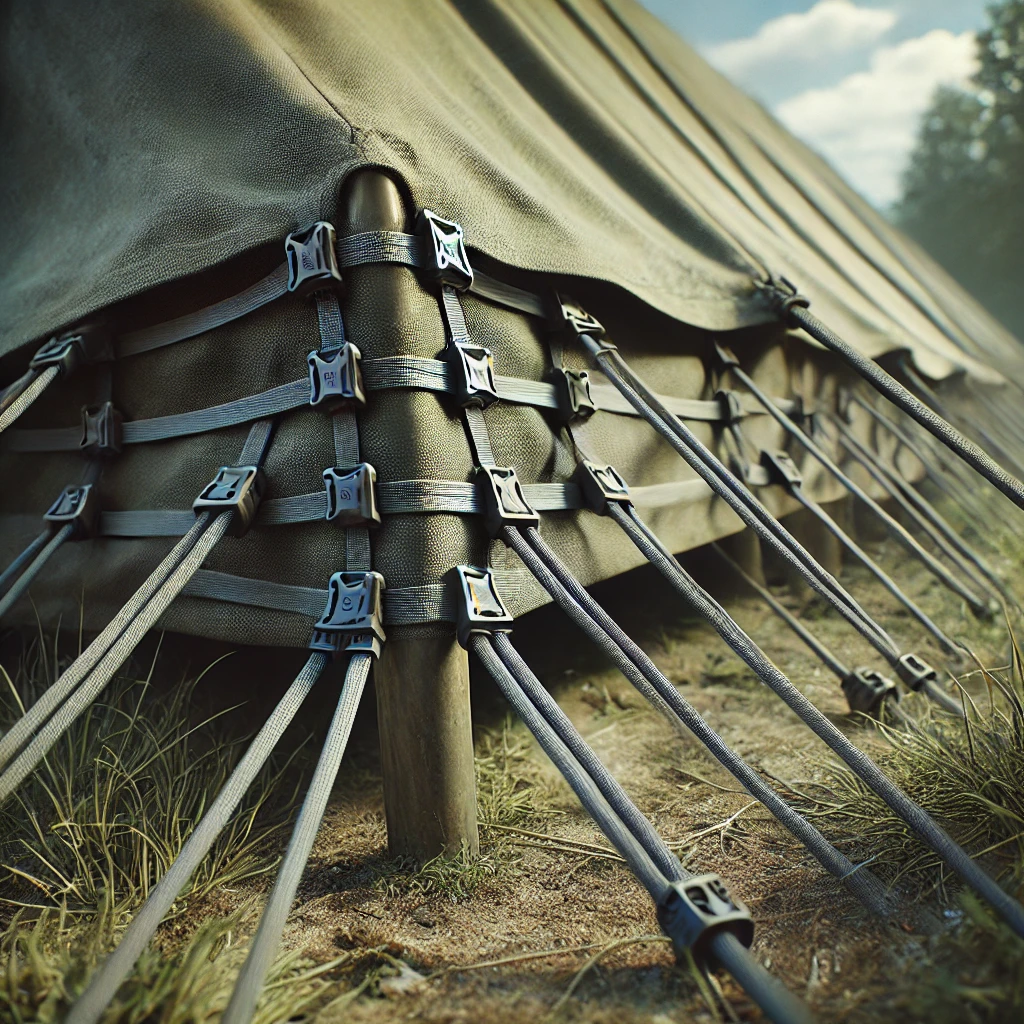Cable ties, also known as zip ties, are versatile tools that can be incredibly useful in constructing temporary shelters and tents. These lightweight, strong fasteners can help you create a sturdy structure quickly and easily. Let's explore how to use zip ties effectively for your outdoor shelter needs.
Choosing the Right Zip Ties
When selecting zip ties for outdoor use, consider the following:
- UV-resistant ties: These withstand sun exposure without becoming brittle.
- Length: Longer ties offer more flexibility for various shelter designs.
- Strength: Look for ties with higher tensile strength for load-bearing applications.
Opt for ties that are at least 12 inches long and have a tensile strength of 50 pounds or more. This ensures they can handle the stress of shelter construction.
Basic Shelter Construction Techniques
Creating a simple lean-to shelter with zip ties is a great starting point. Here's how:
- Find two trees about 6-8 feet apart.
- Secure a long pole or sturdy branch between the trees using zip ties.
- Attach one end of a tarp to this ridge pole using zip ties.
- Stake down the other end of the tarp to create a sloped roof.
Use multiple ties at each connection point for added strength. This basic structure can provide quick protection from rain or sun.
Building a More Complex Tent Structure
For a sturdier, enclosed shelter, try this method:
- Create a frame using flexible poles or branches.
- Use cable ties to secure the joints where poles meet.
- Wrap ties around crossing points multiple times for extra stability.
- Attach your shelter material (tarp, plastic sheeting, etc.) to this frame using ties.
Remember to leave an opening for entry and exit. You can create a door flap using additional ties as hinges.
Also see: How to Identify the Right Tensile Strength for Your Cable Ties
Reinforcing Your Shelter
To make your temporary shelter more wind-resistant:
- Add guy lines: Attach cordage to your shelter's corners and stake them out.
- Use zip ties to secure these guy lines to your shelter's frame.
- Create additional tie-down points along the shelter's edges using zip ties.
This helps distribute wind force and prevents your shelter from collapsing in strong gusts.
Creating Interior Organization
Cable ties can help organize the inside of your shelter:
- Hang a ridge line using cable ties to create a clothesline.
- Attach small pouches or nets to your shelter walls for storage.
- Secure lighting to your shelter frame using ties.
These small additions can greatly improve comfort in your temporary home.
Emergency Repairs
If your shelter sustains damage, cable ties can provide quick fixes:
- Patch tears by "sewing" the fabric together with cable ties.
- Reinforce weakened joints in your frame with additional ties.
- Create makeshift grommets by poking holes and inserting ties.
Always carry extra cable ties for these unexpected repair needs.
Safety Considerations
While cable ties are incredibly useful, keep these safety tips in mind:
- Avoid over-tightening ties, as this can damage your shelter materials.
- Regularly check and replace ties that show signs of wear or UV damage.
- Be cautious of sharp edges left after trimming excess tie length.
Proper use of cable ties ensures a safe and sturdy shelter.
Also see: How Cable Ties Can Improve Workplace Safety
Environmental Responsibility
When using cable ties in nature, practice Leave No Trace principles:
- Remove all ties when breaking down your shelter.
- Dispose of used ties properly; don't leave them in the environment.
- Consider using biodegradable ties for short-term shelters.
Respect nature by minimizing your impact on the environment.
Advanced Techniques
For more complex shelters, try these advanced cable tie techniques:
- Create modular panels: Build separate wall sections and join them with ties.
- Construct a dome: Use flexible poles in a geodesic pattern, secured with ties.
- Make a multi-room shelter: Connect smaller structures with tie-secured corridors.
These methods allow for larger, more versatile temporary living spaces.
Combining Cable Ties with Other Materials

Enhance your shelter's functionality by combining cable ties with:
- Paracord: Use ties to create adjustable tensioners for paracord guy lines.
- Plastic sheeting: Secure clear plastic windows in your shelter walls.
- Natural materials: Attach branches or leaves for camouflage or insulation.
This versatility allows you to adapt your shelter to various environments and needs.
Practice Makes Perfect
Before relying on these techniques in the field, practice at home:
- Set up and break down your shelter multiple times.
- Experiment with different designs and materials.
- Time yourself to improve efficiency in emergency situations.
Familiarity with these methods ensures you can quickly create shelter when needed.
Conclusion
Cable ties are an invaluable tool for creating temporary shelters and tents. Their strength, versatility, and ease of use make them perfect for outdoor enthusiasts, emergency preparedness, and disaster relief efforts. By mastering these techniques, you'll be ready to create safe, sturdy shelters in various situations.
Remember, the key to successful shelter building lies in preparation and practice. Always carry a variety of cable ties in your outdoor kit. With these skills, you can confidently face unexpected weather or emergency situations.
For more insights and tips on cable ties and other related products, be sure to explore cabletiesunlimited.com and follow us on our social media communities on Facebook and Instagram!

